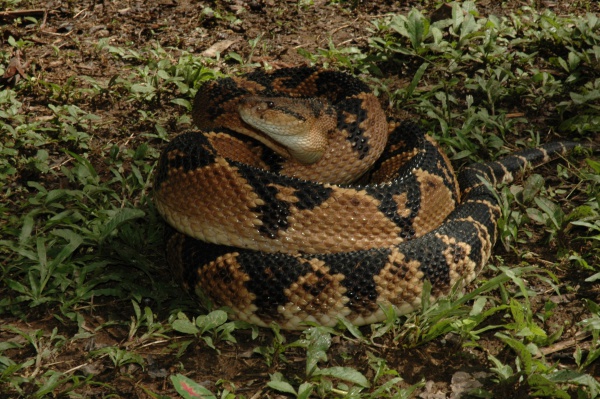Facts About Bushmaster
The Southern American bushmaster, also known as the Atlantic bushmaster, is a captivating and formidable venomous pit viper. Scientifically referred to as Lachesis muta, this snake is indigenous to South America and is celebrated for its remarkable size. Adult bushmasters typically grow to about 2 to 2.5 meters (6.6 to 8.2 feet) in length, although some can reach an astonishing 3.65 meters (12 feet). This makes it the largest viper species and the longest venomous snake in the Western Hemisphere.
Visually, the Southern American bushmaster is quite distinctive. It features a broad head, a cylindrical body covered with keeled scales, and a striking color pattern that can range from yellowish to reddish or gray-brown, adorned with dark blotches.
Depending on the region, this snake goes by various local names, including mapepire zanana, surucucú, shushúpe, or cuaima. The term "Atlantic bushmaster" is also commonly used. Interestingly, the species name "muta" is derived from Latin, meaning dumb or mute. This is because, unlike rattlesnakes, the bushmaster vibrates its tail when alarmed but lacks a rattle to produce sound.
This snake can be found in equatorial forests east of the Andes, in countries such as Colombia, Peru, Bolivia, Venezuela, and Brazil.
Regarding its venom, there is some debate about its potency. While some reports suggest that the bushmaster can produce a large volume of venom, it might be relatively weak. Stress levels can influence both the quantity and toxicity of the venom, complicating research.
Taxonomically, the Southern American bushmaster has two recognized subspecies. Previously, there were two additional subspecies, but they have since been reclassified as separate species.

 Colombia
Colombia